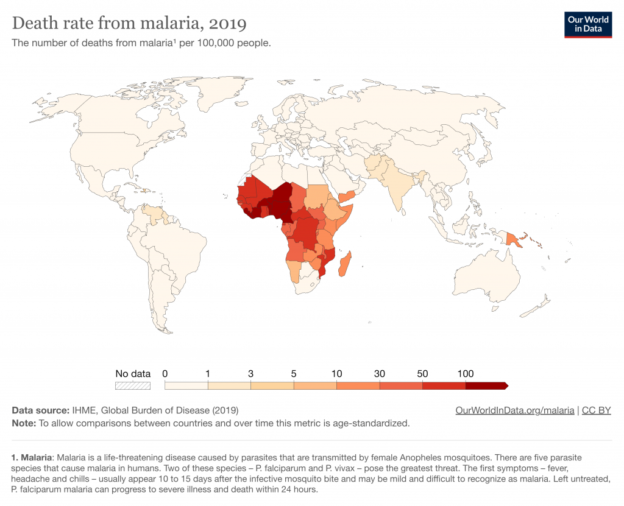Every month we send an email newsletter to our supporters sharing recent updates from our work. We publish selected portions of the newsletter on our blog to make this news more accessible to people who visit our website. For key updates from the latest installment, please see below!
If you’d like to receive the complete newsletter in your inbox each month, you can subscribe here.
Research updates
We’ve recently published a number of new research pages—below are a few highlights. If you’d like to sign up for email updates whenever we publish new research materials, you can do so here.
Perennial malaria chemoprevention in Ghana
In February 2023, GiveWell recommended a $1.6 million grant to PATH to coordinate a randomized controlled trial measuring the effectiveness of malaria interventions for infants and young children living in areas with perennial transmissions of malaria. The trial, which will take place in Ghana, will compare the effects of administering the RTS,S malaria vaccine and perennial malaria chemoprevention (PMC) together versus the effects of administering only the vaccine. These types of trials can provide evidence to governments about the most effective malaria programs for their settings.
Water chlorination in Kenya, India, and Nigeria
In January 2023, GiveWell recommended a $1.8 million grant to the Development Innovation Lab (DIL) at the University of Chicago to conduct research on water chlorination programs in Kenya and develop plans for additional research on chlorination in India and Nigeria. We think water chlorination is a cost-effective way to avert deaths and have recently made several grants to support chlorination programs. The results of this grant will improve our understanding of such programs and could potentially lead to more funding for them in the future.
Organizational support for IRD Global
In April 2023, GiveWell recommended a $5.4 million grant to IRD Global for organizational support. We believe IRD Global has the potential to be an unusually promising grantee because of its emphasis on high-quality evidence, transparency, and proven operational capacity in areas with high disease burdens. We expect this grant will strengthen the organization and increase its likelihood of implementing cost-effective programs in the future.
Updates from top charities
New Incentives
New Incentives recently announced that it has enrolled over 1 million infants in its immunization program so far in 2023, more than in all previous years combined! In this video, Magaji Soja,

